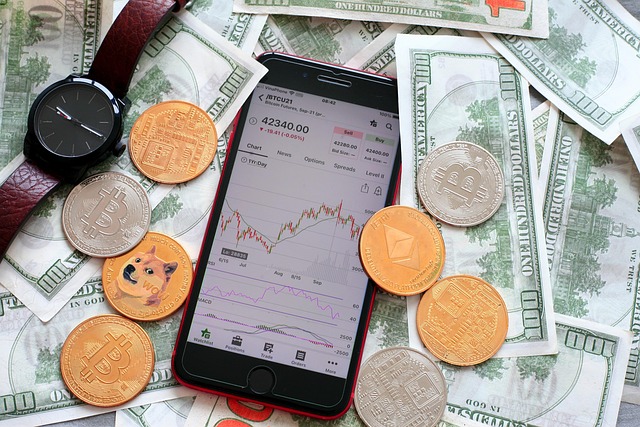Ethereum Average Block Time Chart Explained: Trends and Insights
Author: Jameson Richman Expert
Published On: 2025-10-26
Prepared by Jameson Richman and our team of experts with over a decade of experience in cryptocurrency and digital asset analysis. Learn more about us.
Understanding the ethereum average block time chart helps traders, developers, and researchers track network performance, diagnose congestion events, and forecast confirmation times. This article explains what that chart shows, why it matters, how to interpret patterns and anomalies, how to build your own chart with reliable data, and practical ways to use the insights for trading, backtesting, and operations. Throughout, you’ll find examples, tools, and linked resources to deepen your analysis.

What is “block time” and why chart it?
Block time is the interval between the timestamps of consecutive blocks on the Ethereum blockchain. The ethereum average block time chart plots a moving average (or raw values) of those intervals across a specified period—minutes, hours, days, or longer. Monitoring average block time provides a quick view of how fast blocks are being produced and how consistent production is over time.
Why it matters:
- User experience: Faster average block times mean shorter transaction confirmation waits for users.
- Application performance: DApps with real-time needs (DeFi, gaming) depend on predictable block intervals.
- Network health: Sudden increases or volatility in block time can signal connectivity issues, heavy congestion, or protocol changes.
- Trading & risk: Traders use block-time patterns to estimate confirmation latency for on-chain strategies and avoid stuck transactions during peaks.
Key terminology
- Block time: Time difference between two consecutive block timestamps.
- Average block time: Mean interval over a window—commonly 1-hour, 24-hour, 7-day, or 30-day averages.
- Slot (post-Merge): Ethereum’s PoS system uses 12-second slots that determine block proposal cadence.
- Variance/volatility: How much block time deviates from its average. High variance makes confirmations unpredictable.
- Mempool backlog: A buildup of pending transactions can co-occur with changes in block-related metrics that affect user experience.
How to read an ethereum average block time chart
An effective chart has a few essential elements:
- X-axis: Time window (hour/day/week/month).
- Y-axis: Block time in seconds (or milliseconds).
- Raw vs. smoothed values: Raw per-block intervals are noisy; overlays such as a 7-day or 30-day moving average help reveal trends.
- Volume/tx-per-second overlay: Plotting transactions per second (TPS) or gas usage alongside block time highlights correlations between load and production cadence.
- Event markers: Annotate major upgrades (e.g., The Merge), outages, or DDoS/spam campaigns to explain deviations.
Interpreting patterns:
- Stable, low average (around protocol target): Healthy network conditions—after the Merge, the expected slot cadence is ~12 seconds.
- Short-term spikes: Often caused by client outages, network partitions, or heavy mempool bursts.
- Prolonged increases: Could indicate systemic problems—proposal/attestation delays, slowdown in validator participation, or software regressions.
- High variance with same mean: Predictability is low even if average looks normal—this matters for time-sensitive operations.

Historical context: Ethereum block time evolution
Ethereum’s block production evolved with protocol changes:
- During its PoW era, average block time typically fluctuated in the low-to-mid teens of seconds due to mining difficulty adjustments and network conditions.
- The Merge (Sep 2022) transitioned Ethereum to Proof of Stake, reorganizing block production into 12-second slots with finality driven by attestations and checkpoints—this reduced certain kinds of variability and introduced different metrics (slot inclusion, finality lag) to monitor.
- Other upgrades (EIPs) affected fee dynamics and block content rather than slot cadence, but heavy transaction demand can still cause delays in inclusion and perceived confirmation times.
For a concise technical overview of Ethereum developments and consensus design, consult the Ethereum documentation and authoritative descriptions like Ethereum on Wikipedia.
Ethereum consensus (official docs) and Ethereum — Wikipedia are good starting points.
Where to get reliable data and charts
Trusted sources for block time data and visualizations:
- Etherscan block time chart — public, easy to interpret chart of average block time.
- On-chain analytics providers: Glassnode, Coin Metrics, and Nansen (some paid, some free tiers).
- Blockchain explorers and nodes: Query your own node or use APIs (Etherscan API, Infura, Alchemy) to compute block intervals directly.
- Dune Analytics and custom SQL dashboards for advanced queries and custom visualizations.
Example authoritative reference: Etherscan — Block Time Chart.
Building your own ethereum average block time chart (step-by-step)
Creating a custom chart gives you fine-grained control over window sizes, smoothing, and annotations. Here’s a practical approach:
1) Choose a data source
- Public API: Etherscan API provides block timestamps (rate limits apply).
- Node RPC: Run a Geth or OpenEthereum client and call RPC methods like eth_getBlockByNumber to read timestamps.
- Third-party provider: Alchemy or Infura offer scalable RPC access.
2) Data retrieval (conceptual)
Pseudocode outline:
- Fetch a sequence of block headers for the desired range (e.g., last 100,000 blocks).
- Extract timestamp for each block.
- Compute per-block intervals: interval[i] = timestamp[i] - timestamp[i-1].
- Aggregate using a moving average window or time-bucket averages (e.g., average per hour).
Pythonic pseudo-snippet (concept only):
# Pseudocode — do not use with live keys in this snippet blocks = fetch_blocks(start_block, end_block) timestamps = [b.timestamp for b in blocks] intervals = [t2 - t1 for t1, t2 in pairwise(timestamps)] avg_per_hour = resample_and_average(intervals, interval='1H') smoothed = moving_average(avg_per_hour, window=24)
3) Charting and smoothing
- Use moving averages (7-day, 30-day) to remove noise.
- Plot raw intervals as a semi-transparent area or scatter for context.
- Add bands (±1 or ±2 standard deviations) to highlight volatility.
- Overlay TPS or gas usage to show demand correlation.
4) Detect anomalies and annotate
- Flag values beyond a z-score threshold (e.g., |z| > 3) as anomalies.
- Annotate protocol events: network upgrades, spamming events, and client outages.

Practical examples: Interpreting real scenarios
Example 1 — Short-lived spike in block time:
- Observation: A 2-hour window where average block time doubled from ~12s to ~24s.
- Possible causes: Validator client crash, network partition, or an increase in orphaned blocks (historical for PoW).
- Actionable steps: Monitor client telemetry dashboards, check for GitHub/consensus client incident reports, and look at block inclusion rates. If you’re a trader, avoid large on-chain moves until stability returns.
Example 2 — Consistent drift upward over days:
- Observation: 7-day average moves from 12s to 15s, and variance increases.
- Possible causes: Reduced active validator participation, a misconfigured client, or a market-driven surge in transactions causing re-proposals and delays.
- Actionable steps: Assess validator metrics (if you run a node), check public block producers’ status, or delay time-sensitive batch operations.
How traders and developers use the chart
- Traders: Estimate transaction confirmation latency for order routing, arbitrage, and liquidation strategies. During higher average block times, increase safety margins for time-sensitive orders.
- Backtesters: Use accurate block-time distributions when backtesting on-chain strategies to avoid look-ahead bias. For a guide on backtesting trading strategies effectively, see this comprehensive resource.
- Smart contract developers: Build UX that communicates likely confirmation times and adjust gas estimation logic based on recent block-time trends.
- Protocol researchers: Study the correlation between block time changes and liveness/finality metrics to evaluate upgrades.
Recommended reading for backtesting methods: How to Backtest a Trading Strategy Effectively — CryptoTradeSignals.
Correlations: block time vs other on-chain metrics
An ethereum average block time chart is more insightful when combined with other overlays:
- Gas price / fee market: Rising average block time with rising gas prices can indicate congestion and competition for inclusion.
- Transactions per second (TPS): When TPS spikes but block time stays constant, block fullness increases—leading to higher fees.
- Finality metrics (post-Merge): Look at finality lag and attestation inclusion rates; slot cadence might be steady while finality takes longer when aggregator attestations are delayed.
- Network health indicators: Node client diversity, peer count, and propagation speeds affect block production and effective block time.
For comparison to other blockchains, view historical forecasts and price drivers which sometimes correlate with on-chain activity: Bitcoin Price Forecast & Key Drivers.

Common pitfalls and how to avoid them
- Relying on raw per-block data without smoothing: Raw block intervals are noisy—use appropriate averaging or resampling to reveal meaningful trends.
- Mixing timezones and bucket boundaries: Align timestamps to UTC and be consistent with bucket boundaries when computing hourly/daily averages.
- Ignoring outliers: Single bad blocks (or incorrect timestamps from emphatic nodes) can skew short-window averages—filter or cap extremes.
- Confusing slot time and block time: Post-merge slot target is ~12s, but inclusion and finality behavior vary—monitor multiple metrics.
Actionable monitoring setup (alerts you can implement)
Set up alerts so you’re notified when the ethereum average block time chart signals problems:
- Alert when 1-hour average > target + X% (e.g., > 18s if target 12s).
- Alert when standard deviation over 4 hours > threshold (indicating instability).
- Alert when correlation between block time and gas price breaks down (e.g., block time increases while gas price drops—may indicate validator issues rather than demand).
- Integrate incident sources: track consensus-client GitHub, EthStakers channels, and explorer status pages.
Use cases: trading, staking, and node operations
Trading: estimate confirmation windows for on-chain arbitrage and parametrize slippage. If mean block time trends upward, increase your gas price bids or use priority fees to reduce risk of delayed execution.
Staking & validation: for validators, the chart can help detect missed attestations or proposer problems. If your nodes show discrepancies vs. network averages, investigate connectivity and client logs immediately.
Node operators & dApp devs: when average block time fluctuates widely, consider queueing non-urgent transactions or advising users to wait for confirmations; implement retry logic that accounts for higher latency and reorg probability.

Advanced analytics: combining with machine learning
Data scientists can model block-time series using ARIMA, LSTM, or anomaly detection models to forecast short-term latency and predict congestion windows. Use features such as:
- Recent block times and moving averages
- TPS, gas price percentiles, and pending transaction count
- External signals: exchange volumes and major price moves
Keep in mind: models trained on pre-Merge PoW-era data may not generalize perfectly into PoS unless features are adapted (slot behavior, finality patterns).
Practical tools & watchlist
- Etherscan block charts: https://etherscan.io/chart/blocktime
- Run your own node and query timestamps via eth_getBlockByNumber
- Dune Analytics dashboards for custom visualizations
- Analytics platforms: Glassnode, Coin Metrics (for paid, high-fidelity data)
Resources and further reading
Deep-dive and related articles that expand practical trading and network analysis:
- Is Binance Spot Trading Halal — In-depth Analysis (CryptoTradeSignals) — useful if you’re evaluating exchange practices and compliance when choosing where to route trades.
- Bitcoin Price Forecast — Key Drivers (CryptoTradeSignals) — helpful for cross-chain context when activity on other chains may influence Ethereum congestion.
- How to Backtest a Trading Strategy Effectively — learn how to incorporate realistic block-time distributions into backtests.
- Blockchain — Wikipedia — general technical background on block production concepts.

Where to monitor and trade (optional links)
If you’re actively trading or testing strategies and want quick access to major exchanges, consider these platforms (use the referral links if you choose to register):
Putting it into practice: a sample monitoring playbook
Follow this short playbook to make the ethereum average block time chart operational for your workflow:
- Choose your monitoring window (1H, 24H, 7D) and data source (Etherscan or your node).
- Implement smoothing: 24-hour moving average plus a raw overlay.
- Set alerts for thresholds: 1-hour mean > 150% of 24-hour mean, and 4-hour SD > baseline.
- Correlate alerts with gas price, TPS, and pending tx count. If gas price remains low while block time spikes, start troubleshooting clients or validators.
- Before executing large on-chain orders, check the current chart and recent variance—if volatility is high, schedule or broadcast with higher priority fees.
Summary and final recommendations
The ethereum average block time chart is a concise, powerful indicator of network performance and predictability. For traders, it informs confirmation time estimates and slippage risk. For developers and validators, it signals operational abnormalities that warrant investigation. Build or use charts that combine raw intervals, moving averages, variance bands, and correlated metrics like gas price and TPS to make actionable decisions.
Start by bookmarking a trustworthy chart such as Etherscan’s block-time view, set automated alerts for deviations, and incorporate realistic block-time distributions into your backtests and production systems. For deeper practical guides on backtesting strategies and broader market context, refer to the linked CryptoTradeSignals articles above.
If you want, I can provide a sample Python script to pull block timestamps from an Ethereum node or Etherscan and plot an averaged chart with anomaly detection rules tailored to your chosen thresholds.